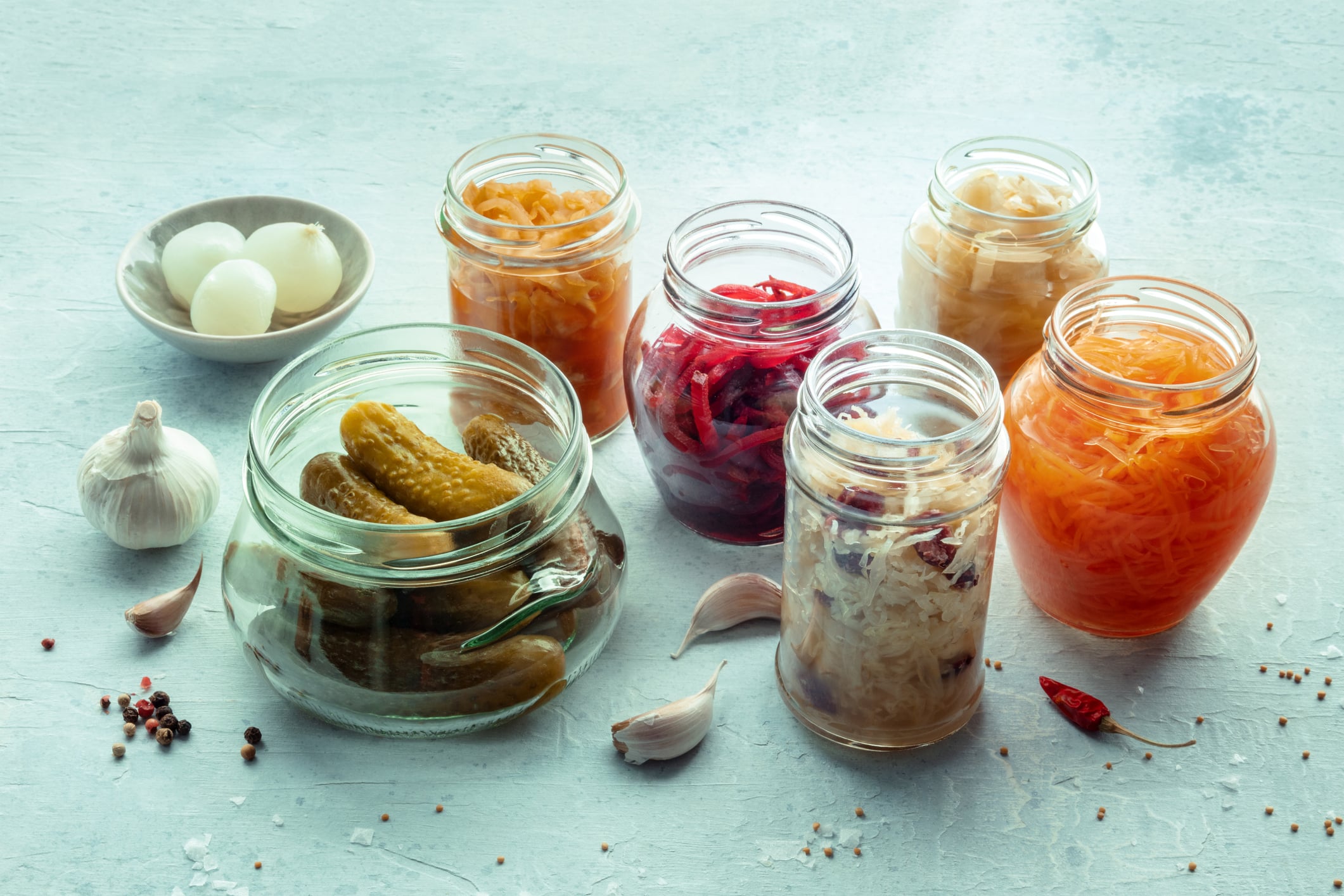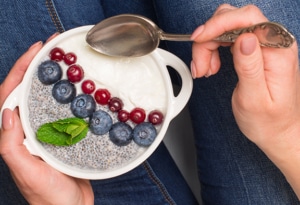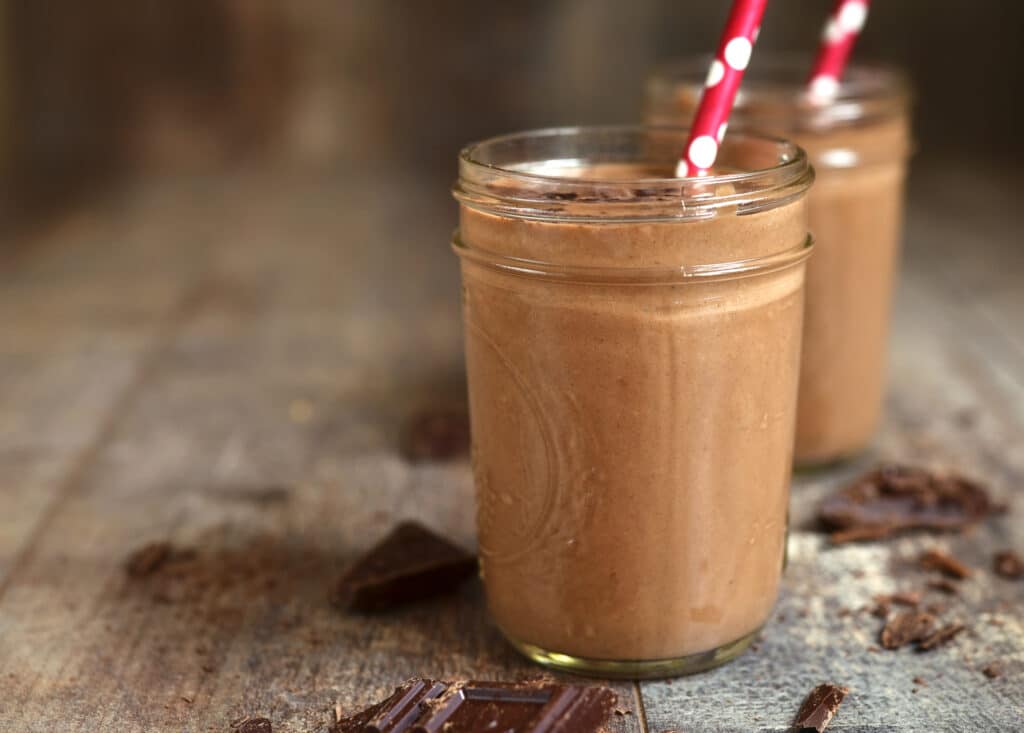

Written by: ADS Staff
Reviewed by: Halle Elbling, MS, RDN, CDCES
Discover the pivotal link between GI health and diabetes management with our comprehensive guide to the impact of prebiotic and probiotic foods on your gut health. Whether you’re navigating the complexities of probiotics for the first time or seeking a refresher on their profound effects, this article is your go-to resource for understanding how these dietary elements can influence your well-being.
What’s the Difference Between a Prebiotic and a Probiotic?
Most people don’t think much about the bacteria living inside their bodies, but that doesn’t mean they aren’t there. The average person hosts about 39 trillion of these organisms. To put that in context, your body has more bacteria than cells!
Fortunately, not all of these bacteria are bad. Some even play an essential role in keeping you healthy, especially the bacteria found in your digestive tract, or GI health. These are part of what’s called your “microbiome,” and a diverse microbiome can keep you healthy and fight diseases. So you might be asking, “What’s the difference between prebiotic foods and probiotic foods?” Here’s a quick breakdown:
Probiotics:
These are beneficial live microorganisms, typically bacteria, that confer health benefits when consumed in adequate amounts. Found in fermented foods like yogurt, kefir, and sauerkraut, probiotics colonize the gut and help maintain a balanced microbiome. In the context of diabetes, probiotics may aid in managing blood sugar levels, reducing inflammation, and enhancing immune function.
Prebiotics:
Unlike probiotics, prebiotics are non-digestible fibers that serve as nourishment for beneficial gut bacteria. Commonly found in foods like garlic, onions, and Jerusalem artichokes, prebiotics stimulate the growth and activity of probiotics, promoting a flourishing gut ecosystem. Incorporating prebiotic-rich foods into the diet can support digestive health, improve insulin sensitivity, and potentially mitigate diabetes-related complications.
Probiotics, GI Health and Diabetes
Recent research suggests that the gut might actually be the body’s “true brain,” highlighting the crucial role of gastrointestinal (GI) health in our overall well-being. As we pay more attention to GI health, we’re learning more about the benefits of probiotics and prebiotics in addressing a variety of health concerns. This raises an important question: can they also impact diabetes? While it’s too early to say for sure, the initial evidence is promising.
One study presented during the American Heart Association’s Scientific Sessions involved 80 people who followed the DASH diet, a diet designed for people with high blood pressure. Some test subjects stuck to the standard DASH diet, while others ate a modified version of the diet that added foods rich in probiotics. By the end of the study, people who ate the DASH diet and probiotics reduced their A1C by 8.9 percent, while people in the other test group lowered their A1C by 3.4 percent. (Notably, 15 percent of test subjects had prediabetes.)
Other studies indicate that probiotics could possibly reduce glucose and insulin levels in people with diabetes. Much more research on probiotics needs to be done, but they appear to improve health in general and heart health in particular. Since heart disease is often linked to diabetes, adding probiotics to your diabetes diet may be wise.
The Best Probiotic Foods
There’s no shortage of foods that contain probiotics, but some are better sources of these bacteria than others. Here are 10 of the best probiotic foods for your GI health.
Yogurt

Yogurt is a fantastic way to get probiotics – most of the time. Some yogurt processing methods kill these bacteria, so make sure your yogurt of choice includes active or live cultures. On top of that, be sure to steer clear of yogurt options with high levels of added sugar and fat.
Kefir
Kefir starts with cow’s or goat’s milk, but it’s supercharged by adding kefir grains. Despite their name, these aren’t grains in the traditional sense. Instead, they’re cultures of yeast and lactic acid bacteria which resemble cauliflower.
Sauerkraut
People have been eating sauerkraut for millennia, and unpasteurized sauerkraut is rich in probiotics. Sauerkraut is also rich in fiber as well as vitamins C and K. You can eat this cabbage-based dish on sausages or as a side dish. (Like kefir, sauerkraut contains both probiotics and fiber, making it a “synbiotic” food.)
Tempeh
Tempeh is a fantastic option if you’re looking for a high-quality meat substitute. It’s made from fermented soybeans and has a naturally earthy or mushroom-like flavor. Along with the probiotics it contains, tempeh’s fermentation process creates some vitamin B12 – even though soybeans do not have that nutrient on their own.
Kimchi
Like sauerkraut, kimchi is usually made from cabbage. The similarities don’t stop there – it’s full of bacteria that can improve your gut health. Kimchi is made from cabbage and is high in some vitamins and minerals, including vitamin K, riboflavin (vitamin B2), and iron. This Korean side dish also comes with quite a flavor kick thanks to its use of seasonings like ginger, garlic and red chili pepper flakes.
Kombucha
Another beverage that’s full of probiotics is kombucha, a type of fermented black or green tea. Some discussion on the health benefits of kombucha may be overstated due to a lack of reliable research. Still, the probiotics it contains should positively affect your well-being. Be sure to avoid any Kombucha with added sugars or flavors.
Miso
A few other fermented soybean-based foods are good sources of probiotics. That includes miso, a type of Japanese seasoning. Miso is a good source of protein and fiber. It is also high in various vitamins, minerals, and plant compounds, including vitamin K, manganese, and copper. However, miso is made using a significant amount of salt so be sure to eat in moderation.
Traditional Buttermilk
Did you know buttermilk comes in two varieties? The version we’re interested in is traditional buttermilk – the liquid left over from making butter. Traditional buttermilk is low in fat and calories but contains several important vitamins and minerals, such as vitamin B12, riboflavin, calcium, potassium and phosphorus. Cultured buttermilk may be easier to find, but it usually doesn’t contain probiotics.
Pickles
Pickles are a good way to get probiotics, but the pickles you eat matter. Don’t bother eating pickles with vinegar since they don’t have live probiotics. It’s also crucial to remember that pickles can be high in sodium – enjoy them in moderation!
Natto
Natto is another fermented soybean product that’s popular in Japan. Most commonly, this product is mixed with rice as a breakfast dish. In addition to its probiotic benefits, natto is full of protein and vitamin K2 (which can improve your cardiovascular health and bone health).
The Best Prebiotic Foods
Even if you add probiotics to your diet, they won’t be much help if you don’t give them the fuel they need. Increase your fiber intake with our top 10 prebiotic foods.
(A word of warning: while fiber plays a crucial role in diabetes health, many of these foods also contain regular carbohydrates. Be sure to remember that while planning your diabetes diet.)
Garlic
Vampires may not enjoy garlic, but the probiotics in your microbiome do! Along with promoting good bacteria growth, garlic can inhibit the development of bacteria that cause disease. As if that wasn’t enough, garlic has anti-inflammatory, antioxidant, and lipid-lowering properties.
Onions
Garlic and onions are related, so it makes sense that they share many of the same health benefits. Both foods are full of the prebiotic fiber inulin (not to be confused with insulin). They also both contain FOS, which helps your gut flora, supports your immune system, and breaks down fat.
Leeks
Leeks are another member of the family that includes onions and garlic. As a result, they’re also an excellent option for your prebiotic needs. Furthermore, leeks are highly nutrient-dense – they have lots of vitamins, they are especially high in vitamin K and minerals and low calories.
Jerusalem Artichokes
Despite their name, Jerusalem artichokes are not actually a type of artichoke. In truth, they’re more closely related to sunflowers. These vegetables contain two grams of dietary fiber rich in inulin per 100-gram serving and are high in B vitamin, and thiamine.
Chicory Root
Chicory root comes from a flowering plant in the dandelion family. It’s popular for its coffee-like flavor and is a great source of prebiotics. Approximately 68% of chicory root fiber comes from the prebiotic fiber inulin which promotes friendly gut bacteria, reduces constipation, and can help control glucose levels. Whole chicory root can be boiled and eaten as a vegetable, whereas ground chicory is often brewed with water to make a coffee-like drink.
Asparagus
Few well-known vegetables are better sources of prebiotics than asparagus. This veggie naturally contains inulin, making it a great choice to feed your probiotics. Additionally, it may even help prevent some types of cancer.
Bananas
Bananas are full of vitamins, minerals, and fiber – including limited amounts of inulin. A medium-sized banana will give you three grams of fiber, not to mention 422 mg of potassium. And while you may not normally eat green bananas, these unripe fruits come with resistant starch, a powerful prebiotic.
Barley

If you eat cereal or drink beer, barley may already be part of your diet. A 100-gram serving of this grain will give you anywhere from two to 20 grams of beta-glucan. That prebiotic fiber has been shown to lower your total, LDL (or “bad”) cholesterol and reduce the risk of cardiovascular disease.
Oats
Whole oats are another grain that has prebiotic benefits. Along with their high levels of beta-glucan, they have a bit of resistant starch. The beta-glucan in oats may slow down digestion, improve blood sugar control and control people’s appetites.
Cocoa Powder
Cocoa powder may make you think of chocolate, but it’s also a good source of prebiotics. It also has polyphenols, which have anti-inflammatory and antioxidant properties. Cocoa products possibly could even reduce the risk of type 2 diabetes (however, the large amounts of sugar found in most chocolate products could counteract that effect).
Are Probiotic Supplements Right for Me and My GI Health?
While all kinds of foods contain probiotics, another option is taking probiotic supplements. These are liquids, powders, or pills that contain yeast or live bacteria, all designed to support GI health.
Not all probiotic supplements are equally effective. Products in this category can vary wildly in terms of bacteria types and concentrations. On top of that, some of these supplements make entirely unproven claims.
Some people should not take probiotic supplements, especially individuals with small intestinal bacterial overgrowth or sensitivity to ingredients included in specific supplements. If you don’t have these issues, choosing a trustworthy, effective supplement can be a great way to meet your probiotic needs. To make sure you get good advice, talk to your dietitian or another healthcare professional before using supplements.
Get Nutritional Support From CDCES Experts Here at ADS
Taking care of any element of your health can be complex, including your GI health. By increasing your intake of probiotics and prebiotics, you can lower your risk of diabetes-related heart disease and enjoy many other health benefits. If you’d like another resource to add to your diabetes management team, work with our in-house expert Halle Elbling, MS, RDN, CDCES.
When you’re taking steps to treat your diabetes in other ways, choose ADS for the supplies you need or additional diabetes management support. Whether you’re looking for continuous glucose monitors, diabetes testing supplies, insulin pumps, glucose meters, or other diabetes-related products, we can help! And, if you’re looking for another diabetes expert to add to your management team, we’re here for you.
Frequently Asked Questions
What Is The Difference Between Prebiotics and Probiotics?
You may typically think of these foods in terms of “prebiotic vs probiotic,” but that isn’t really the case. Probiotics are the helpful bacteria living in your microbiome, while prebiotics are the fiber these bacteria use as a food source. That means both probiotics and prebiotics play an indispensable role in your gut health.
What Are Probiotics Good For?
Probiotics can have many positive effects on your health. Along with improving your digestive system’s well-being, they can boost heart health, reduce depression, and potentially even make your skin better-looking.
Which Foods Are Probiotics and Prebiotics?
There are many different foods with prebiotic and probiotic benefits. If you’re still asking “what are prebiotics foods?,” take a look at our lists of the best prebiotic and probiotic foods above.
What Are The Best Probiotics for Women?
In addition to their overall health benefits, some probiotics can assist in balancing women’s vaginal microbiomes. That may reduce your risk of bacterial vaginosis and other infections. If you are a woman looking for probiotic supplements for this purpose, ask your doctor for guidance.
Can I Eat Prebiotics and Probiotics Together?
Since probiotics need prebiotics to survive, eating prebiotics and probiotics together is a good idea. Some foods, like kefir and sauerkraut, are “synbiotic” – that is, they contain both probiotics and prebiotics.
